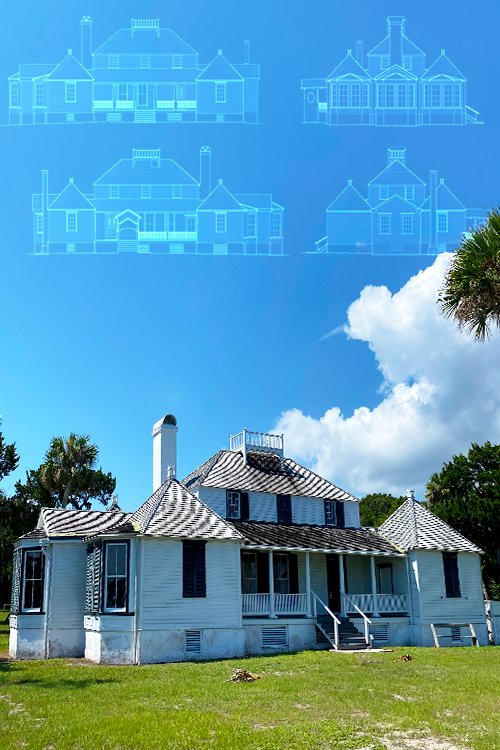Uncovering Kingsley Plantation
Kingsley Plantation
Learn more about Florida’s plantation era at Kingsley Plantation, located within the 46,000-acre Timucuan Ecological & Historic Preserve National Park in Jacksonville, Florida. Drive 2 miles down a winding road from the Fort George Island State Park entrance and you’ll reach the grounds of the Kingsley Plantation historic site, where nearly 80 men, women, and children were enslaved throughout the 1800s. Today, palm trees and large oaks wrapped in resurrection fern stretch across the land where slaves once toiled in the sweltering Florida sun – plowing, planting, picking, and ginning Sea Island cotton.
Sea Island Cotton and 18th Century Loom exhibits at Kingsley Plantation
The Kingsley Family
Sea Island cotton was just one of Zephaniah Kingsley’s successful cash crops. Having made his fortune as a slave trader, Kingsley owned 32,000 acres in Florida where he spearheaded numerous plantations and used slave labor to produce rice, timber, and citrus.
In 1814, Kingsley made his way to Fort George Island with his family via the St. Johns River where a plantation house had already existed for over 15 years.
Interior of the Kitchen House (Anna’s home) at Kingsley Plantation
His African wife, Anna, and their three children were emancipated slaves. As a former slave, Anna became a slave owner, landowner, and managed Kingsley Plantation. In the Kitchen House, which was also Anna’s home, slaves cooked chicken and rice stew using okra, black eyed peas, and sesame seeds brought from Africa. Zephaniah became an activist for African American civil rights after Fort George Island became a U.S. territory in 1821. The Kingsley family lived here until 1838 when Zephaniah sent his wife and children, along with 50 of his now freed slaves, to Haiti, the only free black colony at the time.
Slave Cabins at Kingsley Plantation, circa 1880 (Florida Memory)
Slave Life at Kingsley Plantation
The slaves of Kingsley Plantation served as field hands, carpenters, cooks, and blacksmiths. Every day for nearly 50 years, the slave laborers were each assigned a quarter-acre of land to tend crops such as cotton, sugar cane, beans, and potatoes. They kept pace with each other so as not to make more work for themselves the next day. At the peak of harvest season, a workday might last up to 16 hours. At night, the slaves worshipped; tended to their own crops; hunted, fished, and cooked dinner; and sang and danced around the fire to the sounds of tribal music.
Tabby Slave Cabins at Kingsley Plantation, Present day
The slaves lived in cabins constructed of tabby (a mixture of sand, water, and oyster shells). The cabin layout formed a semi-circle village, promoting a sense of community and resilience. The slaves did not rebel with physical violence, but rather they accepted their plight in the hopes that their children would someday be free.
While the names of these enslaved Africans have been erased, these tabby structures remain along with several archaeological artifacts, giving us insight into what their lives might have been like at Kingsley Plantation. The Kingsley family thrived on the production of Sea Island cotton until the slaves were freed in the 1860s.
Plantation House at Kingsley Plantation
Today’s Preservation
Kingsley Plantation is the oldest plantation house still standing in Florida. Governed by the National Park Service and listed on the National Register of Historic Places, this waterfront historic site is open to public tours, including the barn, gardens, kitchen house, and planter’s house. You can also arrive by boat along the Fort George River which spills out into the Atlantic Ocean. Imagine 200 years ago, thousands of enslaved men, women, and children unloaded from cargo ships and traded as valuable goods along the dockside of Kingsley Plantation.





